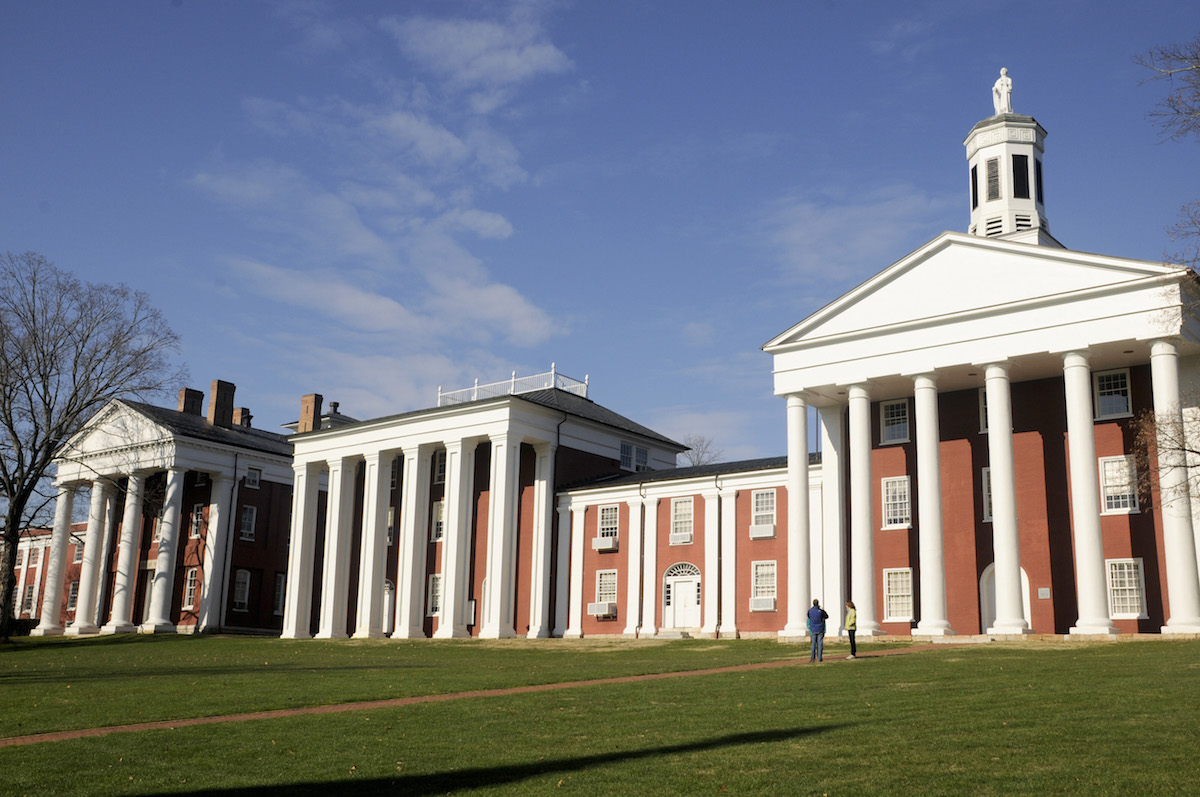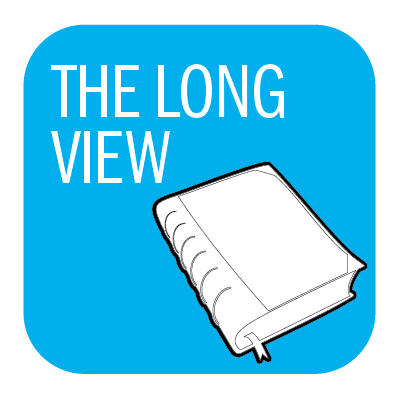
Reflecting on recent calls for stripping the name of Robert E. Lee, a slave owner who went to war in slavery’s defense, from Washington & Lee University, historian Emory Thomas has noted that the school’s other namesake, George Washington, was also a slaveholder—and that this raises the awkward possibility that one of the country’s most distinguished liberal arts institutions might be known one day simply as “&.”
Thomas spoke with tongue securely in cheek, but the scenario he posited seemed a logical, if absurd, progression from the current obsession with de-christening institutions named for people with ties to slavery. But recent explorations by several scholars demonstrate that slavery was far more integral to America’s development as a nation than we have chosen thus far to acknowledge—which also suggests the enormous difficulty, if not outright futility, of finding historically prominent institutions and individuals entirely free of its insidiously pervasive touch.
African slave labor had first been introduced on the tobacco plantations of the colonial Chesapeake during the 17th century, but slavery’s emergence as a truly dominant force in national and international commerce awaited the arrival in 1793 of Eli Whitney’s cotton gin, which boosted exponentially both the profitability of growing cotton and the demand for—and value of—slaves. With the explosive spread of cotton-growing across the southern interior and into the new states of Alabama and Mississippi, the booming southwestern frontier proved an irresistible magnet for both people, free and unfree, and financial investment. Slave prices rose meteorically in response to soaring demand, stoked as well by a congressional ban on further importation after 1808. Cotton accounted for nearly one-third of the value of U.S. exported merchandise by 1820, and closer to two-thirds by 1860, more than three-fourths of it going to Great Britain.
Maintaining this fibrous connection between southern slave plantations and the voracious looms of Lancashire required myriad supporting ventures in production, trade, services, and financing on both sides of the Atlantic. With the American banking system still wracked with growing pains in the early 19th century, English firms like Baring Brothers marketed high-yield bonds backed by the slaveholdings of planters in Louisiana and elsewhere, while profits from the slave trade supplied vital capital for the nascent Barclays Bank.
As the American financial system matured, a wide range of domestic banks got in on this act. Two of these, Citizens’ Bank and Canal Bank of Louisiana, which accepted roughly 13,000 slaves as collateral and came to own well over a thousand slaves outright, were destined to become cogs in the great financial wheel of J. P. Morgan Chase. Likewise, Moses Taylor, director of the City Bank of New York, the forerunner of Citibank, managed the monetary fruits of the endless exertions of slaves on large sugar plantations and was also deeply involved in the illicit importation of slaves into Cuba.
Get your history fix in one place: sign up for the weekly TIME History newsletter
Northern shippers also profited handsomely after 1808 in the brisk interstate transfer in slaves that saw some one million bondsmen transferred by sea as well as land from the Upper to the Lower South between 1810 and 1860. Thus it was not in New Orleans but Providence that some of the state’s most prosperous and influential citizens gathered at what the local newspaper described as “a very numerous and respectable” meeting, on Nov. 2, 1835, to unanimously endorse several resolutions condemning the actions of recently formed anti-slavery societies in the free states, declaring “coercive measures for the abolition of slavery” a “violation of the sacred rights of property,” This proclamation was altogether fitting. Rhode Island had sent more than twice as many ships to Africa for slaves than all of the other colonies or states combined, many of them as part of the infamous Triangular Trade in which New England rum was exchanged for African slaves who then endured the horrific “middle passage” that brought them to the auction blocks of southern or Caribbean ports. Across the region, a sizable workforce was also employed in building the vessels requisite to these activities. Although slavery was said to be the “peculiar institution” of the South, even the loftiest families of old Boston were tapped into the enormous, far reaching stream of wealth it produced.
As for New York, surely there are few cities, North or South, where so many prominent physical fixtures are tied to slavery, even down to key sports venues like Madison Square Garden, Citi Field and the Barclays Center. These disturbing reminders are actually less incongruous than they seem. Even though the international slave trade had been illegal for more than half a century, this ban was so brazenly flouted in the city that the London Times dubbed New York “the greatest slave trading market in the world” in 1860.
Ironically, in an era when so much wealth was derived from pursuits directly related to slavery, the two institutions that tended to receive the most philanthropy were churches and colleges. Perhaps no institution of higher learning has confronted its historical indebtedness to slavery and the slave trade more forthrightly than Brown University, whose principal early benefactors included the Brown brothers, who hauled in hefty profits from trading and transporting slaves. Meanwhile, Tench Francis, who wrote the insurance for some of the Browns’ slaving voyages, became one of the founding trustees of the University of Pennsylvania, whose ranks presented a virtual who’s who of Philadelphia’s high-profile slave traders. And so it goes, from Rutgers, to Princeton, Columbia, Harvard and Yale, all of which and others—as detailed in Craig Steven Wilder’s Ebony and Ivory—benefited significantly at some point from the largesse of men who owned or trafficked in human beings.
There is no escaping the critical role of slavery in facilitating our development as a nation. Historian Calvin Schermerhorn has it right when he calls enslaved Africans laboring in southern cotton fields “the strengths and sinews of a robust capitalist system.” The institution’s tentacles reached far. Even among those who were committed to destroying this malignant fact of national life, evidence of its metastasis is not far to seek, a case in point being abolitionist poet James Russell Lowell, who was born into a family whose textile fortunes were built on cotton grown by slaves and grew up on an elegant Cambridge estate built by a wealthy sugar planter. Anyone who expects that merely scouring the taint of slavery from the faces of a variety of American institutions and edifices moves us toward a definitive resolution of so intricate and complex a historical dilemma would do well to heed the words of a former bondsman recounted in Edward Baptist’s recent book on slavery and American capitalism, for they are truly reacting to a story whose “half has never been told.”

James C. Cobb is Spalding Distinguished Professor of History, Emeritus, at the University of Georgia and a former president of the Southern Historical Association.
More Must-Reads from TIME
- Breaking Down the 2024 Election Calendar
- How Nayib Bukele’s ‘Iron Fist’ Has Transformed El Salvador
- What if Ultra-Processed Foods Aren’t as Bad as You Think?
- How Ukraine Beat Russia in the Battle of the Black Sea
- Long COVID Looks Different in Kids
- How Project 2025 Would Jeopardize Americans’ Health
- What a $129 Frying Pan Says About America’s Eating Habits
- The 32 Most Anticipated Books of Fall 2024
Contact us at letters@time.com